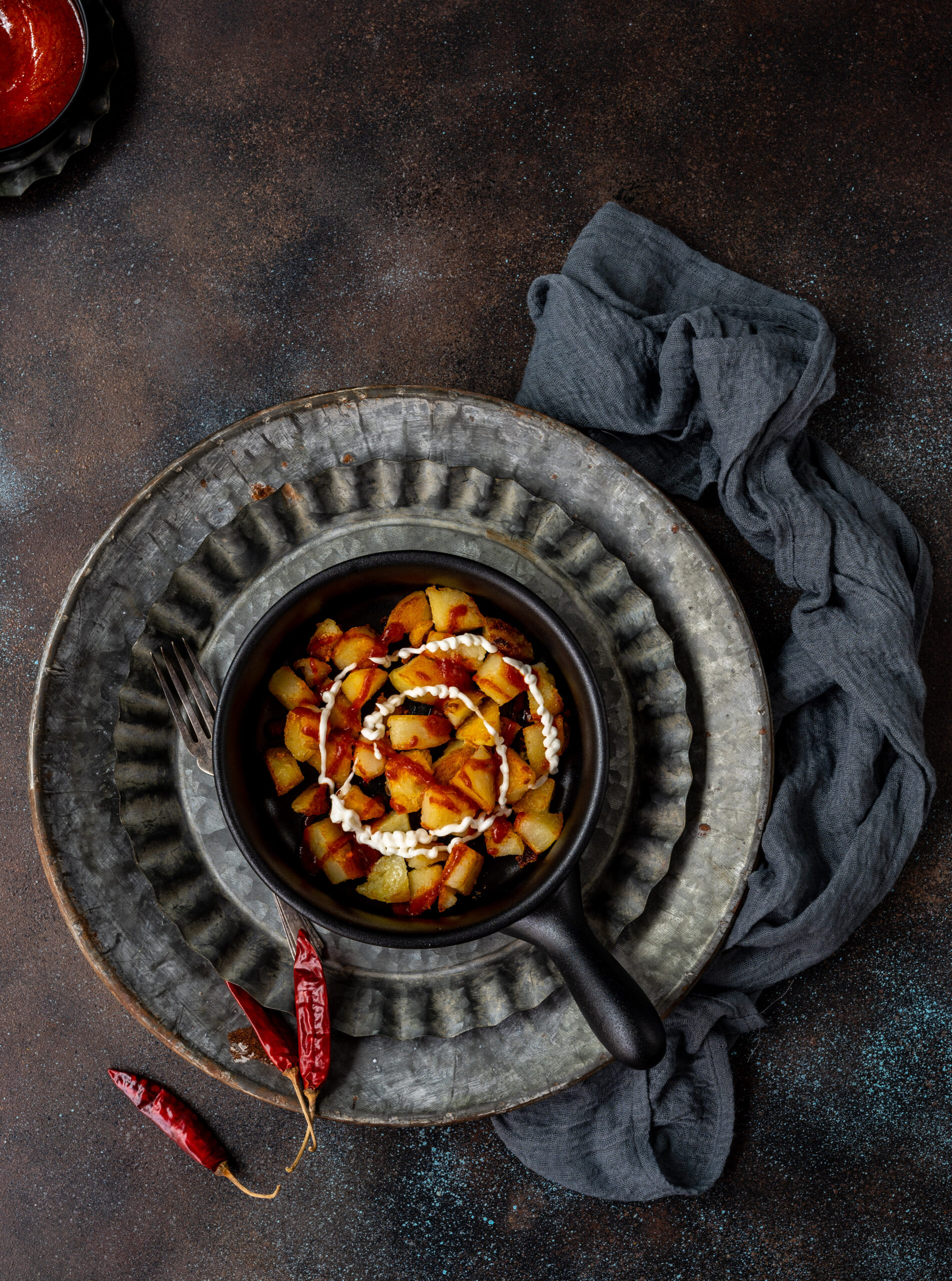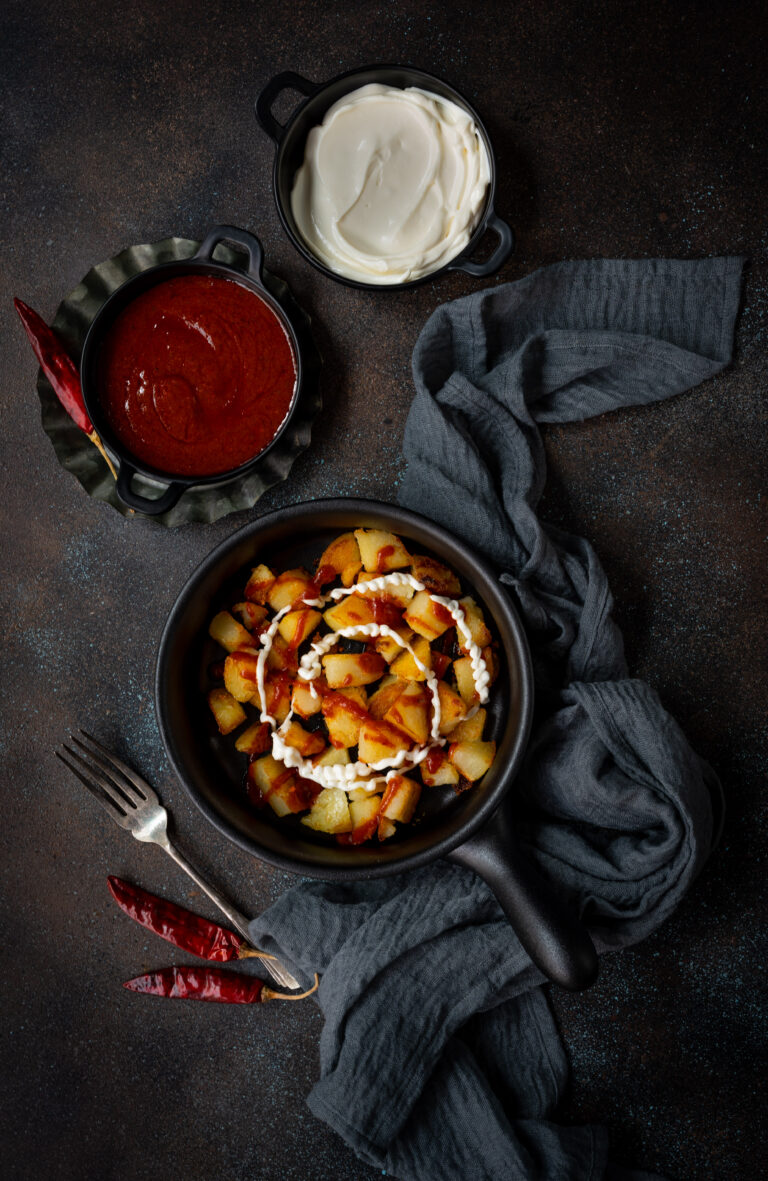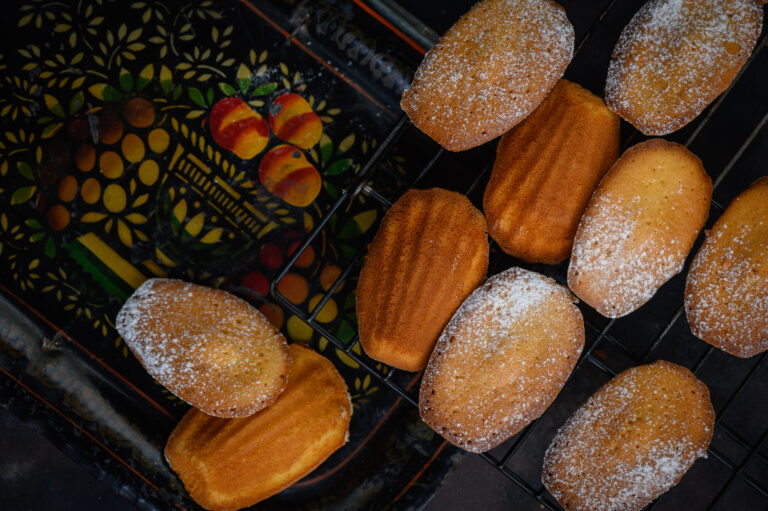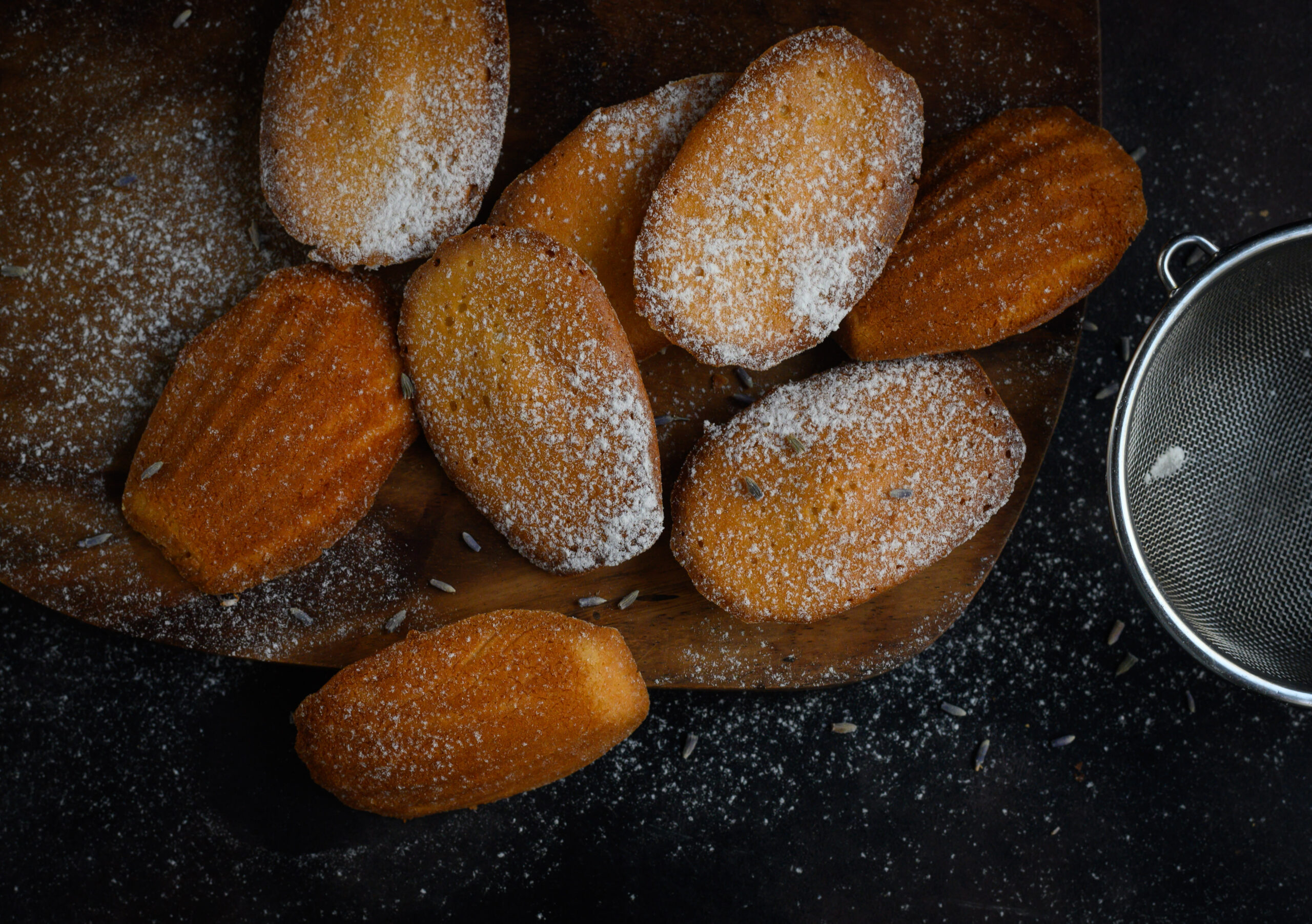Last week, I shared the recipe for a saffron crème brûlée, a close rendition of my favourite dessert, crema catalana. Nostalgia for the vibrant city of Barcelona and for all the delicious food I’ve enjoyed there also made me fondly recall how I love patatas bravas too. It’s a typical Spanish dish, with a name that translates to “spicy potatoes”, and I’m so happy to share this recipe with you too.
Patatas bravas fall into the category of tapas or small plates dishes, and can be found delicious and cheap all over Spain. The best I’ve had was at a small and nondescript place, popular with the locals, that a friend took me to. They originated in Madrid, but I first enjoyed them in beautiful Barcelona, naturally. My husband used to export garments and I would accompany him on business trips to the city. We would often end the busy days with a plate of spectacularly-made Spanish potatoes. No trip, however short it may have been, was complete without some patatas bravas.
Intriguingly, I learnt that the Europeans did not consider the potato an edible item when it was first brought there from the Americas. It was looked down on by the elite as food that was only for labourers, who needed its energy benefits. The Spanish armies did consume it for this reason, however. When famines hit in the 18th century, the durable potato finally found pride of place in the European palate. Imagine: they deprived themselves of such deliciousness earlier!
Now, of course, the potato is hardly seen as humble. At El Tomás de Sarrià, the Barcelona restaurant that is most famous for the patatas bravas, their preparation of the dish is so renowned that the son-in-law of the King of Spain, numerous famous football and handball players and other celebrities have been known to frequent it.
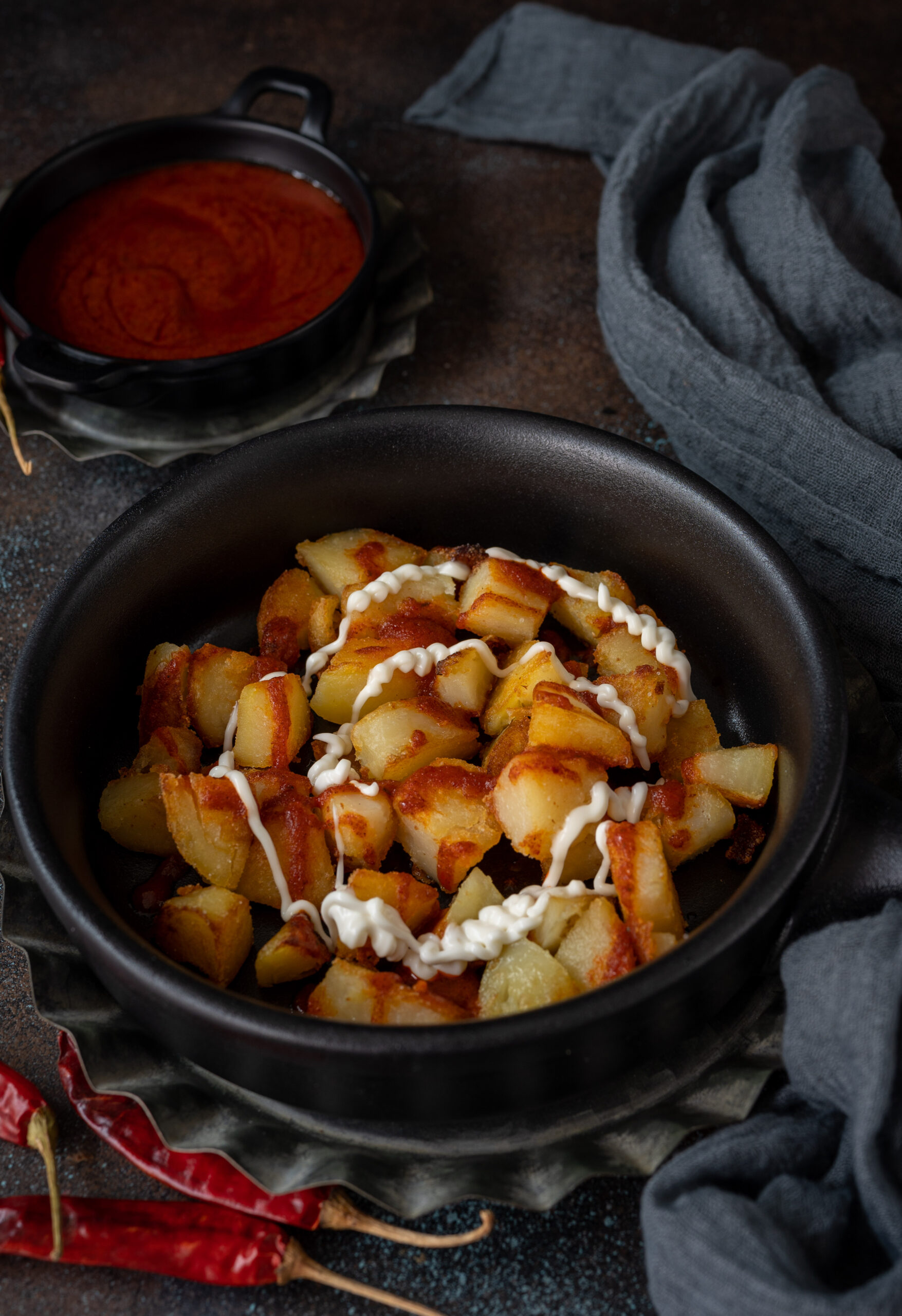
But really, who doesn’t love potatoes? At home, we consume them in any form. Fried, sautéed, mashed, you name it. As much as I personally love them too, I do try to avoid eating them because I know how addictive they are. Once I start on just one wedge, I can’t stop myself from reaching out for more. Funnily enough, this is the same complaint – or compliment, rather – that I receive about my almond brittle. It happens quite often that a customer will call me up and say, “I couldn’t stop munching on them and have finished the batch you sent already! Do you have more?”.
These cherished “demands”, that I so gladly fulfil, also come from my family. For instance, whenever I make shakshouka, the family wants potatoes on the side. I discovered that patatas bravas are a brilliant accompaniment to that egg-based dish, and this multi-continental medley is much enjoyed at home. Every time I up my game a little bit, such as by substituting some plain vegetable dish for something more exciting like patatas bravas, the family decides that that’s the combo that they want ever onward. Do you ever find this happening – as your repertoire expands, the meals you prepare become more elaborate because the people you cook for begin to ask for specific dishes more frequently?
Our potato obsession at home is so intense that my husband even went so far as to buy an air fryer so as to eat healthier and feel less guilty about his consumption. But I personally feel that it’s better to have the oil-fried version occasionally than to use the air fryer every day. So that machine has been shelved for now, gathering dust in some poor corner. In the meanwhile, we are enjoying our almost-authentic patatas bravas, made with oil and love and lots of other good stuff!
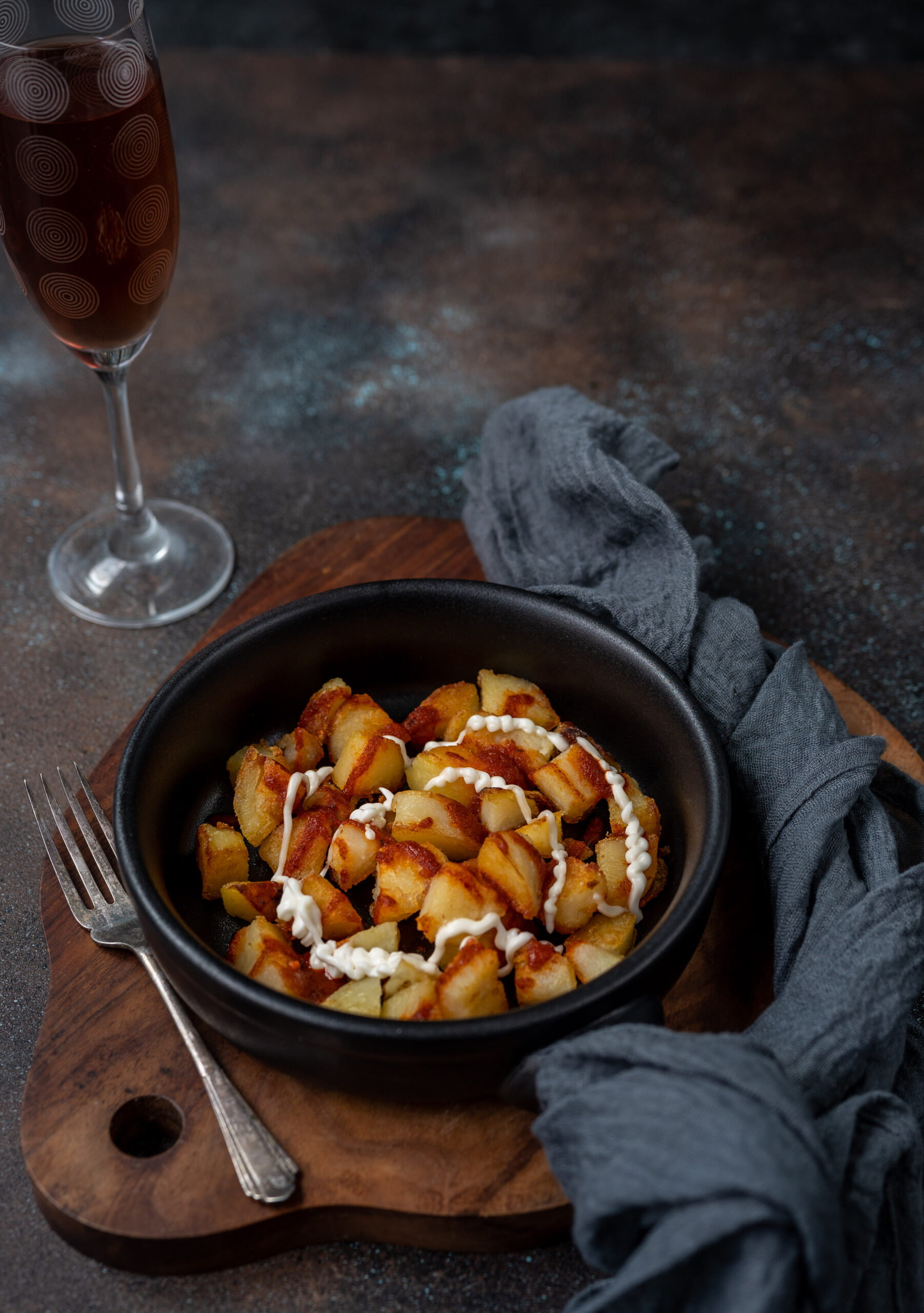
Patatas Bravas
(Yield portion: 1, serves 2)
2-3 cups diced potatoes
2 cups oil for frying
Salt to taste
Alioli
2 garlic pods crushed
¼ cup mayonnaise
Bravas sauce
¼ cup olive oil
1 tablespoon paprika
1 teaspoon chili powder
Salt to taste
1½ teaspoons corn flour
1 cup vegetable broth
Patatas bravas are easy to make, and you begin with the potatoes and prepare the two sauces while they are frying.
Heat up the oil in a pan and deep fry the potatoes until they are golden. Drain them on a paper and then place them in a wide bowl.
Prepare the aioli sauce by crushing the garlic well and mixing it into the mayonnaise. Stir until well incorporated.
Prepare the bravas sauce by first adding the oil to a saucepan. Once it has heated, add the chili powders and flour. Stir till toasty. Then, add the vegetable broth gently and stir till emulsified. Boil on a low flame until the sauce thickens (this will take approximately 3-5 minutes). The sauce should have a consistency that can be drizzled.

To assemble the dish, simply drizzle the two sauces, aioli and bravas, over the fried potatoes and serve hot. You can also add some mayonnaise or sour cream, if you prefer.
I wonder what these patatas bravas will taste like if I swap the regular potatoes out for sweet potatoes. I’m definitely going to give that experiment a try…
